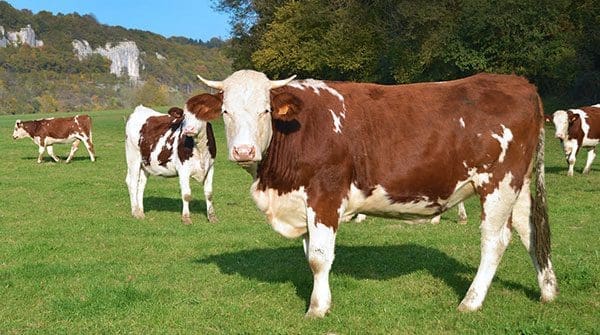The Mad Cow Crisis had a lasting impact on Canada’s beef industry
 The Mad Cow Crisis started 20 years ago this week. For most Canadians, May 20, 2003, means little. But for the beef industry, the situation was nothing less than dreadful. It brought devastation, bankruptcies, and broken families. It was a nightmare.
The Mad Cow Crisis started 20 years ago this week. For most Canadians, May 20, 2003, means little. But for the beef industry, the situation was nothing less than dreadful. It brought devastation, bankruptcies, and broken families. It was a nightmare.
On May 20, 2003, the Canadian Food Inspection Agency declared that a black Angus cow originating from northern Alberta had been detected with bovine spongiform encephalopathy (BSE), also known as Mad Cow disease. In response, the United States promptly imposed a ban on Canadian beef and cattle imports, leading to approximately 40 other nations taking similar measures.
Mad cow disease is a fatal illness that gradually deteriorates cattle’s brain and spinal cord. Although humans cannot contract mad cow disease, there is a rare possibility of developing a human variant called variant Creutzfeldt-Jakob disease (vCJD), which is also fatal. Over time, vCJD causes degeneration of the brain and spinal cord. According to the U.S. Centers for Disease Control and Prevention, more than 500 Americans die every year exhibiting symptoms that match those of the disease. An autopsy is required to properly diagnose the disease.
 Photo by Gilles Detot |
| Related Stories |
| Promising probiotic for dairy cattle headed to marketplace
|
| Are some cows better at weathering climate change?
|
| Beef irradiation is long overdue in Canada
|
Canada couldn’t export anything. Since 60 percent of our beef went overseas, Canada suddenly had too much beef. It took more than two years before the U.S. reopened its borders. Japan reopened its borders to Canadian beef in March of this year, almost 20 years later.
When the borders closed, and Canada had an overcapacity of beef, Canadians bought more beef in support. In fact, at that time, Canada became the only country in the world to see domestic demand for beef go up after the discovery of its first native BSE case. Everyone was expecting Canadians to fear the product, as we saw in Japan, Europe, and elsewhere. But it didn’t happen. Demand for beef per capita from 2002 to 2003 increased by 1.8 kilos, the highest jump ever. It surprised many. Beef consumption per capita was 33.6 kilos in 2003. Today, it’s at 24.8 kilos.
Seeing all this unfolding in 2003, the late and great Anita Stewart, a renowned culinary author, pioneered Food Day Canada to encourage people to eat more Canadian food, including beef. Recently, our own Parliament officially designated the first Saturday of August as Food Day Canada.
In many ways, the beef industry has changed because of the Mad Cow crisis. Significant improvements have been made in testing and surveillance measures to detect and monitor the presence of BSE. These include stricter protocols for screening cattle, particularly high-risk animals, and improved diagnostic techniques.
Additionally, stricter regulations have been implemented regarding the use of animal-derived protein in livestock feed, which was identified as a key factor in the spread of BSE. Canada, like many other countries, has implemented bans and restrictions on feeding ruminant protein to ruminant animals to prevent cross-contamination and the potential transmission of the disease. As such, comprehensive risk mitigation measures have been implemented to prevent the introduction and spread of BSE. These measures include removing specified risk materials (SRMs) during meat processing, which are tissues most likely to carry BSE infectivity.
However, what has not changed is the dominance of meat packers in Canada. In 2003, when beef prices were incredibly depressed, meat packers were making a fortune as beef retail prices barely changed at all. Prices dropped by about 10 percent in some markets but went back up again months later.
The Mad Cow crisis started as our BBQ season was getting underway, so packers and grocers likely didn’t see the point of dropping prices at all. Higher retail prices provoked the ire of cattle producers, and they tried to start processing plants on their own. Over 350 projects started at the time, but only two plants started operations, one in Alberta and the other in Saskatchewan.
Unfortunately, both plants have since ceased operations, leaving us with a massive oligopoly in meatpacking, with three plants processing most of the beef in Canada. This lack of options makes it challenging for cattle farmers to vertically integrate into the meat packing industry.
The Mad Cow crisis has shown us how resilient the beef industry is. Many families had to sell their farms and move to find work as their operations became unprofitable overnight. Canada remains one of the most dominant beef players in the world, despite the heartaches the sector experienced 20 years ago. It’s something to celebrate over a nice barbecued steak or hamburger.
Dr. Sylvain Charlebois is senior director of the agri-food analytics lab and a professor in food distribution and policy at Dalhousie University.
For interview requests, click here.
The opinions expressed by our columnists and contributors are theirs alone and do not inherently or expressly reflect the views of our publication.
© Troy Media
Troy Media is an editorial content provider to media outlets and its own hosted community news outlets across Canada.

